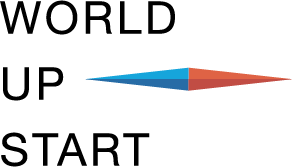Globalizing Market Access Excellence: Navigating the U.S. Healthcare Landscape
Cracking the U.S. healthcare market is a complex endeavor, requiring a deep understanding of its intricacies.
To help you navigate this challenging terrain and craft an effective value-based market access strategy for life science company innovations, we recently interviewed Norris Turner, PharmD, PhD, President & CEO of Turner Healthcare Quality Consulting, Inc.
With almost two decades in the pharmaceutical industry and nearly a decade in other healthcare areas, Norris also serves as a mentor for the WorldUpstart U.S. Market Gateway Accelerator. This blog post distills the insights gleaned from this discussion with Norris.
Strategic Choices as the Foundation of Market Access Success
It’s imperative that your market access strategy begins with the fundamentals: a comprehensive healthcare market analysis. This analysis should address critical questions about your potential customers, payment structures, market dynamics, and the competitive landscape. While scientific innovation is vital, it alone won't guarantee success for life science companies in the U.S. market.
Recognize that in such a vast market, trying to do everything at once is impractical. It may lead you to smartly make counterintuitive choices, such as focusing on smaller or specialized clinics serving specific populations or regions instead of pursuing the largest hospital systems. Therefore, the focus should be on potential customers who are accessible and well-suited—those whose type of setting and patient demographics align with your technology. Consider how value-based care incentives, like those in CMS value-based programs, can play a significant role in your strategy. If your technology can help hospitals meet their value-based performance metrics for their specific patient populations, this can give you a competitive edge.
The most influential, nationally recognized customers may not always be the best stakeholders to start with due to their potential resistance to adopting new technologies or preference for internal innovation. Sometimes, smaller scale, uniquely innovative customers are the most receptive when breaking into the market. The three key ideas to remember for a customer-focused market access strategy are as follows: Find the sweet spot where opportunity intersects with feasibility of delivering results. Explore government initiatives or programs targeting specific populations or diseases as entry points for your technology. Lastly, understand your potential customers’ genuine needs and issues, how your innovation can address them, and gather the evidence to support your innovation’s value proposition.
The Business Imperative of "Doing the Right Thing"
A nuanced focus on market entry underscores the importance of diversity, equity, and inclusion (DEI)—areas sometimes dismissed as "nice to do" but not business critical. Norris emphasizes that in the U.S. business context, efforts towards DEI often fall short. However, there are compelling business reasons to support these efforts. Certain diseases are more prevalent in marginalized communities and focusing on these populations can provide a competitive advantage. A diverse management and advisory team can help identify such opportunities and improve communication with diverse healthcare providers.
Include Decision-Makers and Influencers in Your Market Analysis
Your market access strategy should not only target the ‘right’ institutions but also the ‘right’ individuals who make decisions and influence outcomes. Influence mapping can help identify these decision-makers, recognizing that in large systems, multiple decision-makers with distinct needs and priorities often exist. Tailor your messaging to resonate with the specific stakeholder type—remember that influencers can extend beyond institutions to medical societies or disease associations, which can significantly impact practices and priorities.
Start your healthcare market analysis early, preferably during your innovation's phase II studies. Some decisions, like payment codes, have long time horizons, so planning far ahead is crucial. Be aware that there may be layers of gatekeepers, particularly insurers and managed care organizations, which can significantly impact your product's adoption due to strict access controls.
Be Proactive and Transparent in Your Storytelling
Understand that the problem you aim to solve in your home country may not precisely align with the issue in the U.S., and your innovation might introduce different challenges in the U.S. marketplace. Enhance your market credibility by transparently addressing your product's limitations and challenges while highlighting the benefits and the steps your company is taking to mitigate them.
Conclusion
Developing a value-based market access strategy for the U.S. healthcare market is a multifaceted and complex journey that demands careful consideration of your target customers, their needs, and the unique market dynamics. Preparing for a successful market entry will require you to make sound strategic choices, initiate early market access efforts, prioritize value-based alignment with key customer segments, embrace DEI, and value transparency.
WorldUpstart helps you hone your market entry strategy by putting you in touch with the right expertise, investors, and mentors to double your chances of success. Apply here to be part of the next Accelerator.

